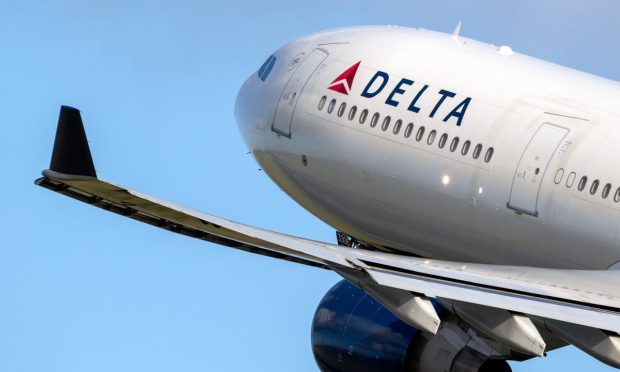Delta Airlines Q4 Earnings Shows That Travel Still Faces A Long Haul to Recovery

Just when you thought it was safe to travel — omicron. Sounding more like an expensive watch than a contagious disease, the COVID-19 variant smacked down Delta Air Lines’ fourth quarter hopes in its latest earnings report and has grounded an optimistic travel and hospitality sector with more cancellations and concerns.
As the first major air carrier to report in 2022, Delta made its best top-line revenue showing since 2019, with total operating revenue of $9.5 billion, per a Thursday (Jan. 13) press release, and “remuneration from American Express in the quarter [at] $1.2 billion, up 11% compared to the December quarter 2019.” It’s a possible sign that more business travelers flew in Delta’s Q4.
“Delta posted a net loss of $408 million for the fourth quarter as fuel and other costs rose, partly driven by disruptions from omicron,” CNBC reported.
“Airlines, including Delta, together canceled more than 20,000 U.S. flights from Christmas Eve through the first week of the year as a spike in COVID infections among crews left them short-staffed and winter storms rolled through some of the country’s busiest airports,” CNBC added in its report.
Speaking with analysts, Delta CEO Ed Bastian sounded positive, saying “while the new variant is not done, it appears that the worst may be behind us.”
That’s an open question across the mobility map, as leisure and corporate travel, as well as adjacent industries like air cargo, are unsure about when a lasting recovery will kick in.
Fitch Ratings predicted in a Tuesday (Jan. 11) press release that “Leisure trips with a domestic focus in regional areas will continue supporting the turnaround, while business travel and events will be on a slower recovery path,” adding that “Last-minute bookings will remain a dominant trend as long as unharmonized border restrictions continue. Longer stays due to work flexibility and incipient environmental awareness in decision-making are trends to consolidate in 2022.”
There’s still no deal with omicron on business travel, as remote work via video conferencing digs in for winter. For a recent example of the impact on corporate travel and events, the CES 2022 trade show said in a Friday (Jan. 7) press release that 45,000 people attended, compared to roughly 171,000 who went in 2020.
In its 2022 outlook, travel technology firm Amadeus said “business travel will rebound — albeit it in a different shape. Growth might be slow, and dependent on several external factors out of the hands of [travel management companies (TMCs)]. New needs are emerging, and corporate clients are looking to TMCs to help meet those new demands — to provide a whole new level of service and information, to manage sustainability issues, and to keep travel costs under control.”
Meanwhile, air freight — the fate of which is intertwined with leisure and business air travel — remains up in the air as well, although not actually flying through the air at sufficient volume.
As The International Air Cargo Association (TIACA) said in a September press release, “With international passenger demand still significantly below pre-COVID levels, global connectivity which air cargo traditionally relied upon for around 45% of total capacity continues to be dramatically reduced.”
TIACA added that “buoyant domestic demand in some key markets has resulted in some aircraft previously dedicated to cargo-only operations being reassigned to address domestic passenger needs. This will create further operational challenges with freighter networks currently operating at unprecedented levels of efficiency, utilization and optimization.”
See also: Nearly Half of Consumers More Likely to Stay at Hotels That Offer Hassle-Free Cancellations, Refunds
